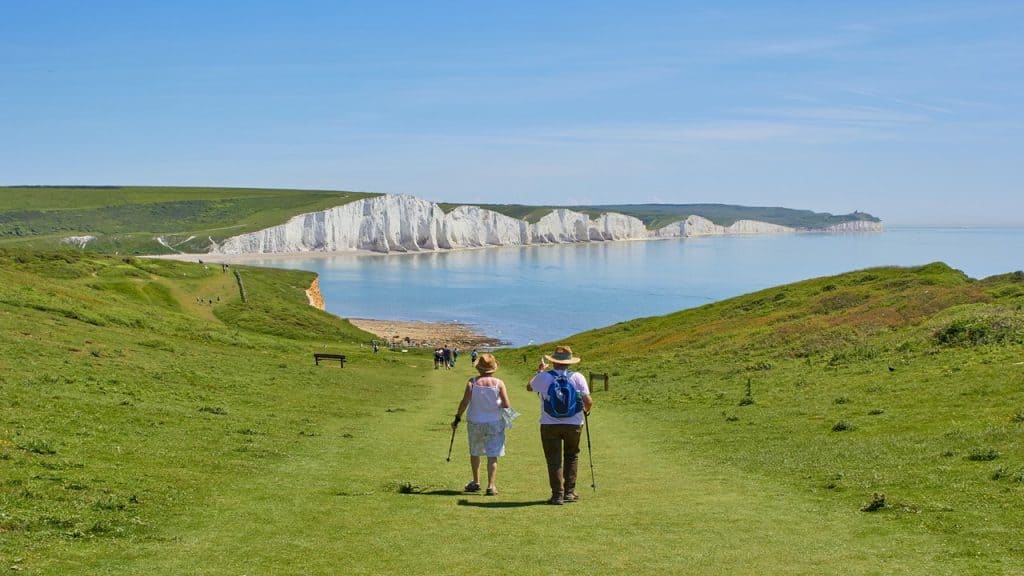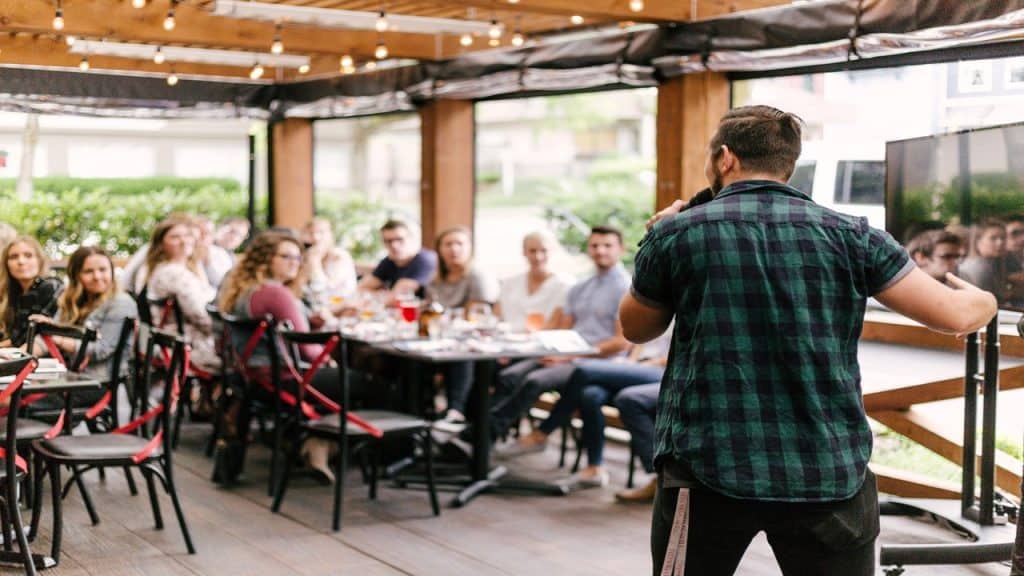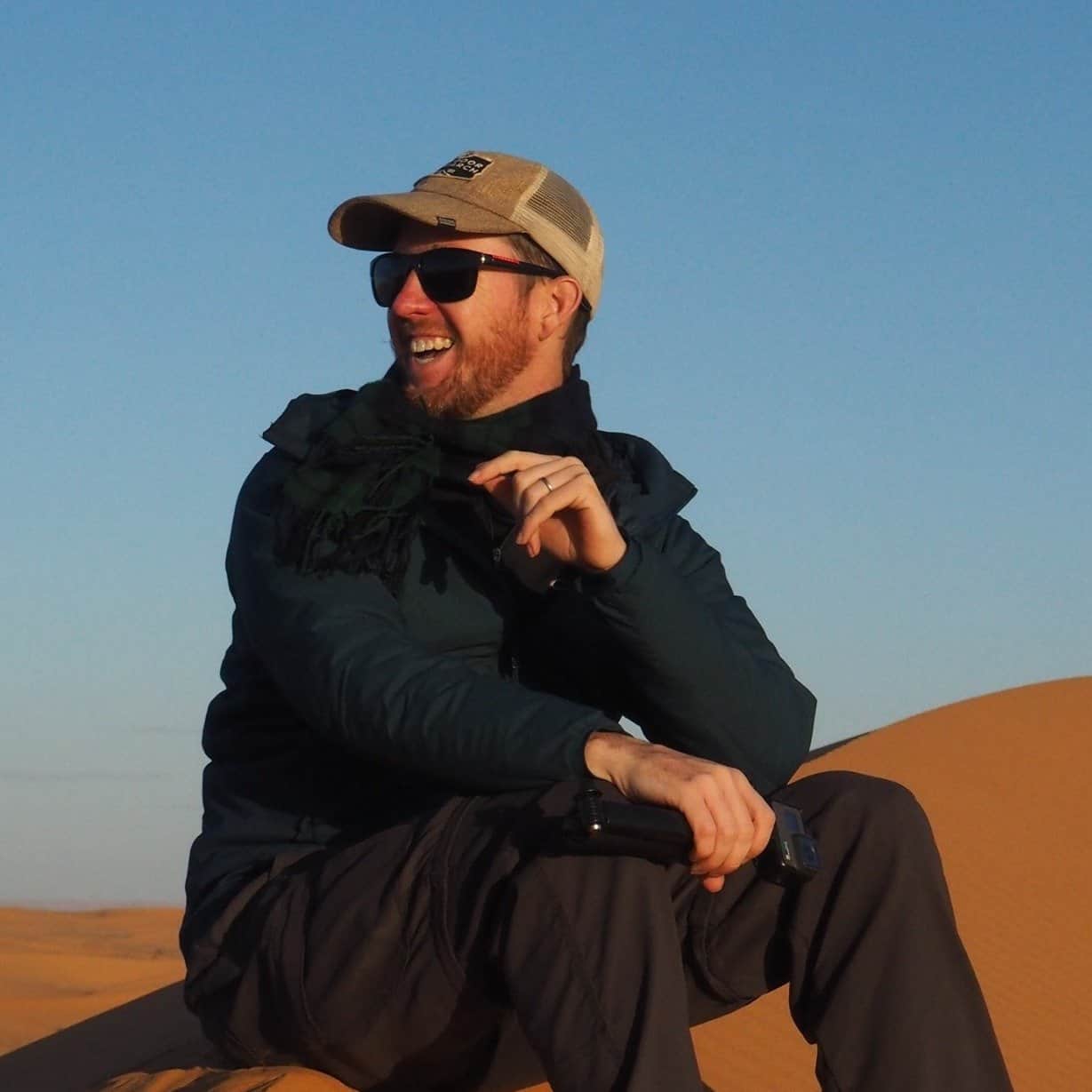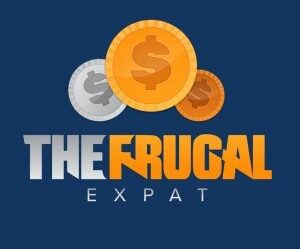Welcome to It Takes Two to FIRE. This interview series has been developed to highlight couples working together to achieve FIRE.
I have been quite excited about this opportunity to learn from FIRE couples and see how their journey has been as they have tried to achieve their FIRE lifestyle.
We have Jessica and Corey from The Fioneers personal finance blog for this interview. They will share their journey from living a corporate life to living a life that they design. As their life evolves, it will one day be life living out of a van, which seems like an incredible journey.
Not everyone has the same motivation to hit financial independence, so continue to read about how Jessica and Corey work together to create their FIRE life.
Introduction
Tell us a bit about yourself.
We’re Corey and Jess. We’re the co-founders of The Fioneers, a FI blog that we started together in 2018. We are the mid-30s DINK (dual income, no kids) couple who lives in Boston, Massachusetts. And… we love talking about money and the freedom it can provide.
We met on the first day of college at a monthly dinner hosted by a scholarship program we were both a part of. When arriving in Spanish class on day 2 of college, I (Jess) recognized Corey and sat across the aisle from him. Little did we know… the first activity was introducing ourselves to the person across from us and getting their phone number (presumably so we could have someone to reach out to if we missed class). The rest is history…
We love all types of adventure, whether it’s touring a new country, learning a new language, or exploring the great outdoors. We have a goal to travel to 100 countries together, but COVID has put that on hold. Instead, we’re converting a campervan that will be our adventure mobile for the next few years.
Our approach to Financial Independence is unique within the FI space. We’re less focused on reaching a particular FI number quickly. Instead, we want to use the financial freedom we gain along the way to FI to design lives we genuinely love. We want to make so many small shifts that we won’t need to change anything when we reach our FI number. We’ll already be living our ideal life.
What would your jobs be? Bouncing off on that, What does a day in your life look like?
As of January 2021, I am a “full-time” entrepreneur. I put full-time in quotes because I work nowhere near full-time hours. After starting The Fioneers in 2018 and launching lifestyle design coaching programs in 2020, I quit my part-time job working in human resources. Now, I am a coach, writer, and speaker.
Every day is a little bit different. Here are the things that stay consistent:
- I wake up without an alarm whenever my body wants to wake up.
- I journal over breakfast and coffee in the morning and plan my day.
- I do a few hours of work in the morning before doing my physical therapy exercises and walking the dog.
- After lunch, I jump back in for a couple more work hours (often writing or preparing for coaching sessions or workshops).
- A couple of times each week, I have a program that I’m running in the evening or on a weekend morning.
- Oh… and I take every other Thursday off as a “kindness day.”
My days are open and flexible. I have plenty of time to get outside, be physically active, focus on hobbies, and invest in my relationships.
Part of the reason I was able to transition into part-time work in 2018 (after dealing with some severe mental health issues) is because Corey has continued to work full-time. Corey leads the finance and operations functions for a mid-size nonprofit organization.
Currently, he works a typical 9-to-5 schedule. He’s currently working from home because of the pandemic but will likely go back into the office 1-to 2 days/week within the next few months.
He enjoys his work and doesn’t feel pushed to get out of it. Yet, he feels pulled toward a life with more freedom, flexibility, and travel. One of our biggest goals is to be location-independent. Because of this, he’s considering leaving his work and joining me as an entrepreneur within the next 1-2 years.
To be clear, we are nowhere near reaching FIRE. We are only 42% of the way to our FI number. But, we’ve learned that there are so many ways to generate income. Working a traditional 9-to-5 job is only one of them (and often provides the least flexibility).
Learning about FIRE

How did you two find out about FIRE?
Corey was really into personal finance when we graduated from college. I credit him with setting the foundation to get us into the strong financial position we are in today. He learned about FIRE early on, but he didn’t think it applied to us. We were in our early 20s, working in nonprofits and barely making ends meet. We were hard-pressed to stay in the black. Early retirement was far from our minds.
Were you two on board with the idea of FIRE from the beginning? Or did it take some convincing on one part?
After a few years, we finally started to increase our income and start saving for the future. Corey set his sights on financial independence, and I wanted nothing to do with it.
We were starting to make real money for the first time in our lives. I wanted to travel. I wanted an apartment with a washer, dryer, and dishwasher. I wanted to go out to eat every once in a while. I wanted life to feel a little less challenging.
All that to say, we were not on the same page with FIRE from the beginning. I wanted to spend money. Corey wanted to save it all.
For many years, we found a happy medium. Corey would convince me that we could save “just 5% more.” I would begrudgingly agree once he convinced me that we could do both save more and have more fun.
It wasn’t until late 2017 that things started to change. I was miserable and burned out in my job, and I was beginning to wonder what other options existed. It was at this exact right moment that Corey gave me the book, Your Money or Your Life. He didn’t push it on me. He said, “I’d love for you to understand my perspective.”
Reading that book was the start of something new for me. I realized two things:
- Some people were designing lives they truly loved.
- There was actual math behind retirement. I had just assumed that you saved as much as possible and hoped you could retire someday. But, no, there was real math, and it made sense.
The book asked a simple question, “What would you do if you didn’t need to work for a living?” At the time, I had absolutely no idea. Because I had poured so much of myself into work, I was so out of touch with myself and what I wanted. I made it my personal quest to figure this out.
How long have you been working towards FIRE? (If already FIREd, how long did it take you to FIRE?)
After reading Your Money or Your Life, I didn’t decide I wanted to go all-in right away. I still saw FIRE as deprivation. I thought I’d need to deprive myself and continue working in my toxic job for another ten years so that I could retire early. That didn’t feel worth it.
After many discussions, we realized that this was not the approach we were willing to take. We wanted the journey to be as remarkable as the destination. Once we agreed on that, I was ready to dive in headfirst. We finally embarked on our shared FI journey in mid-2018.
Which type of FIRE are you aiming for?
We focus on designing a life that we don’t want to retire from as we build financial freedom. That could take us any number of directions.
I initially assumed that building a side business doing something I was passionate about would allow me to reach Barista FIRE (or semi-retirement) someday. By this, I mean that we’d need to withdraw some money from our portfolio, but we would still need to cover some of our expenses with active income.
After seeing the business grow, we see that a Coast FI approach is within reach. If the profits from our business can cover all of our expenses (they are close), all we need to do is let our investments grow in the background.
Our tentative goal within the next 1-2 years is to cover our entire expenses with income from the business and still save around 20%. This would give us the confidence to have Corey quit his job, and we’d still retire early in our late 40s or early 50s.
Who knows? Maybe the business will generate more revenue than we expect, allowing us to reach full FI sooner. Ultimately, the numbers and when we reach FI don’t matter as much to us as designing a life we truly love.
FIRE Strategy

How are you planning on achieving FIRE? What is your strategy?
Our strategy most aligns with Coast FI. We spent a few years focused on increasing our savings rate by increasing our income and decreasing our expenses. This allowed us to reach Coast FI (i.e., the point at which your current investment balance will grow to provide you with a comfortable traditional retirement as long as you cover your costs).
Reaching Coast FI provided us with a tremendous feeling of freedom. We felt like it permitted us to scale back. In 2018, I took a 6-month career break to manage a mental health issue. In 2019, I went back to work part-time (3 days/week), and I decided not to increase my hours when my mental health improved. In 2020, I started a passion hustle (i.e., a business that I’d love to do even if I made $0 doing it). The business grew more quickly than I expected, and I quit my job in January 2021.
Working less allowed us to spend less because we reduced our spending triggers. Corey continued to increase his income at his day job, and we started to grow our business revenue as well. Surprisingly, none of these changes significantly impacted our FI timeline.
We are just now at a point where we’ve started to scale back and see a difference in our savings rate and timeline. We expect to make more significant changes within the coming years that will slow down our FI journey and optimize our quality of life.
What has your savings rate been through the time you have been working towards FIRE?
Here is how we tracked our savings rate from 2015 to 2020.
There are a few essential things about this chart that you should know:
- Corey began tracking our savings rate in 2015, even though I wasn’t yet on board with FIRE. So, we have historical data from before we officially started our joint FI journey.
- In 2018, when we finally got on the same page with our financial goals, it dramatically supercharged our timeline (even though my income decreased in 2018 and 2019).
- We topped out our savings rate in 2020 at around 63%.
What changes have you made to improve your savings rate and achieve FIRE faster?
Now that we’ve reached Coast FI, we’ve decided to scale back and save less. Since Corey is still working full-time and our business has grown in 2021 and 2022, this means spending more money.
In 2021, we decided to buy a Mercedes Sprinter Cargo van and convert it into a tiny home on wheels. We opted to buy a new (rather than used one), and we also decided to hire a professional to complete the build for us. If you want to learn more about these non-frugal decisions, I encourage you to check out this post.
This decision dramatically reduced our savings rate. In 2021, our savings rate will be reduced to 21%. We expect it to be similar for 2022. While this seems like a significant decrease, it’s also important to share that this $120,000 decision only increased our FI timeline by about ten months. In the grand scheme of things, it was worth it.
After the van build is complete, Corey will likely quit his job. So, instead of spending more, we will intentionally decrease our income. If we only save 20% of our income moving forward, we would still reach FI in 10 years (by the age of 45). If we kept going at full speed, we’d reach FI in 7 ½ years.
Why continue to save 60%+ of our income if we only increase our FI timeline by 2 ½ years? Especially when we’re building a life we don’t want to retire from?
What are your investments like? Do you invest in the stock market, real estate, crypto, etc.? What is your strategy?
We are lazy investors and have a simple index investing strategy. Because we are young (and do not plan to use money from our investments for a long time), we have all of our investments in the stock market in various index funds.
Our strategy up to this point has been to:
- Max out our Tax-Advantaged Investment Accounts. Throughout our careers, we’ve had access to many different types of employer-sponsored retirement accounts, including 401k, 403b, and a simple IRA. We also now have access to a solo 401k for our own business. After maxing out our employer-sponsored plans, we also max out our Roth IRAs. This allows us to save money on taxes (either now or later).
- Supplement Investments with a Taxable Investment Account. We’ve paused the contributions to our taxable account during the van build to pay for the build and replenish our emergency fund. After maxing out our tax-advantaged retirement accounts, we also put some money into a taxable brokerage account.
- Automate Everything. At the beginning of each year, we create a plan and decide how much income we want to go into each account every month, and automate it. Automating our investments ensures that we reach our contribution goals each year. It also allows us to ignore the noise caused by stock market volatility.
Life after FIRE

Life after FIRE is different for each person. Some like quitting work to never touch it again. Others may work on side projects. Life is different for all.
What do you plan to do once you reach FIRE? Will you stop working? (If already FIREd, what do you do now that you are FIREd?)
I don’t know what we’ll do after reaching FIRE. To be honest, I don’t look at life as having a before vs. after FIRE date. For us, it’s much more of a continuum. We are designing lives that we don’t want to retire from.
We are making so many small changes along the path to FI, so that when we finally reach our FIRE number, it’ll just feel like another day. We won’t need to change anything. We’ll already be living our ideal life.
Our ideal life includes:
- Keeping a home base while doing significant travel (campervan or international).
- Meaningful part-time entrepreneurship that we love.
- Strong relationships with family and friends.
- Investing in our physical and mental health.
While we aren’t where we want to be fully yet, I suspect our life will include all of these things in abundance long before we reach our FIRE number.
Closing arguments

What has FIRE taught you?
The most important lesson that pursuing FI has taught me is that financial freedom is NOT all or nothing. You aren’t either fully FI and never have to work again OR destitute and need to work in a stressful full-time job until you reach FIRE.
There are so many lifestyle design options available along the path to FI that you can unlock at different journey stages.
Think about what you’d genuinely love to do. Would you like to:
- Travel the world?
- Train for a marathon?
- Work part-time?
- Start a business?
- Volunteer?
- Move to your ideal location?
- Become a digital nomad?
All of those options are available long before you reach FI as you build financial freedom.
Knowing what you know now, would you do anything differently if you had the chance?
I’ve learned that health is just as important (if not more important) than money. Sadly, I learned this the hard way. I pushed myself so hard to reach the next promotion in a toxic job that it completely ruined my mental health.
In 2018, I needed to take a 6-month career break (i.e. medical leave) to recover. Even though I was ready to go back to work part-time in 2019, I still feel like it took me another couple of years to recover from burnout fully. Even today, I still deal with some of the ramifications of that “mental breakdown.”
It is so much easier to maintain your health than to recover and regain your health.
Working in a job that’s causing burnout and negatively impacting your physical or mental health is NOT worth it. You might reach financial freedom earlier, but it will come at a very high cost.
It’s possible to find a good balance along the path to FI. It’s also possible to generate income in a way that respects and affirms your humanity.
What would you say to a young couple just learning about FIRE?
Finding the right balance is key. If you can keep your costs low, increase your income, and still enjoy life, you can reach Coast FI in your 20s or 30s. This will provide you with the opportunity to design your life long before reaching full FI.
Any final words?
The journey to FI should be as remarkable as the destination. So… enjoy the journey!
Some Last Thoughts
Designing a life worth living is something special. Jessica and Corey are certainly a couple creating their lives the way they want. They can help many people out through blogging as they are looking for answers and different thoughts within the FIRE Movement.
Retirement planning and becoming financially independent do not have to be intertwined. The Fioneers have hit Coast FIRE, and working on making life enjoyable for them. The cool thing is if you can build wealth to a certain point like Coast FIRE, the compounding effect can take over. The stress of corporate life can burn us all out. We must take care of ourselves.
The cool thing about this interview series is seeing how people do things differently. We are all not the same and have different goals in mind. I am thankful that the Fioneers could be a part of this interview and share many things about their lives and how they work together to achieve financial security.

I’m Steve. I’m an English Teacher, traveler, and an avid outdoorsman. If you’d like to comment, ask a question, or simply say hi, leave me a message here, on Twitter (@thefrugalexpat1). Many of my posts have been written to help those in their journey to financial independence. I am on my journey, and as I learn more I hope to share more. And as always, thanks for reading The Frugal Expat.







